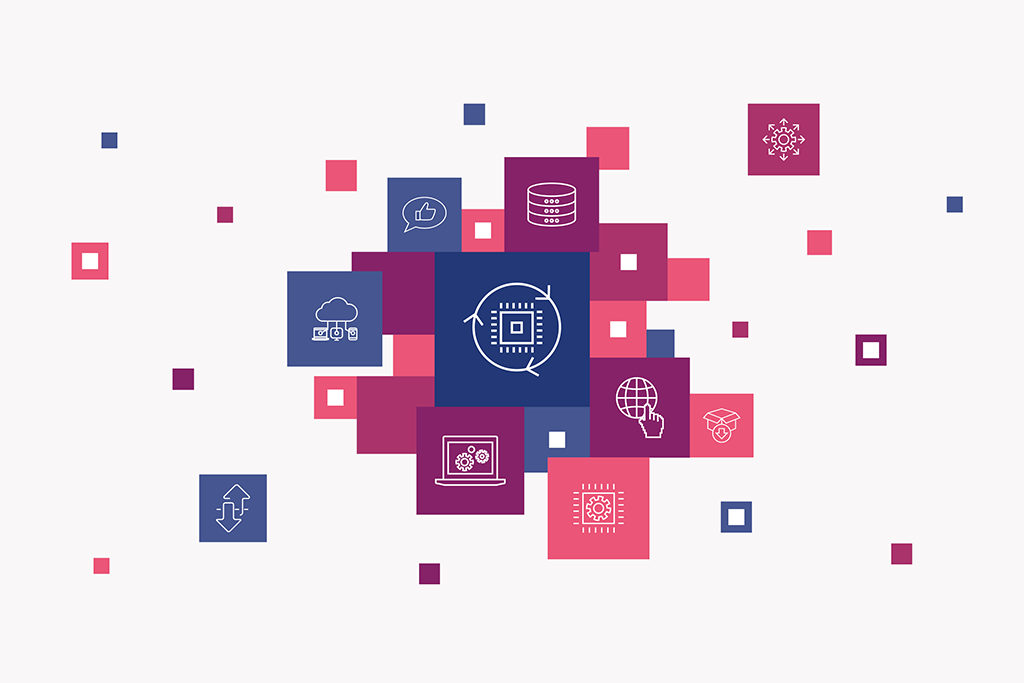
The pace and intensity of digital transformation continues to accelerate. As organizations seek to improve their competitive abilities through adopting new technologies, redefining work processes based on automation and data-driven decision making, and implementing new technologies to support a more agile and interconnected workforce, organizations are quickly reaching the realization that the digital transformation requires a workforce with the skills and mindset to support it. This digital disruption has been experienced in many forms in recent history, but perhaps most visibly as with the introduction of broadly accessible generative artificial intelligence (generative AI), with pervasive effects on organization including on individual workflows and skills, product development, organizational strategy, and more.
In other words, rapid digital transformation requires supporting people with the skills development and reinforcement they need—making learning a mission-critical element of a successful digital transformation.
Responding to Rapid Technological Change: the Skills Gap
As technologies rapidly evolve, the skills required to keep pace and innovate are constantly shifting. Employees will need structural support to adapt and lead, particularly the time and access to learning programs and resources which support their skills. Developing a structure in which your staff have the time and ability to invest in their own skills development is crucially important, as is access to learning resources which are aligned with both the organization’s needs and the individual’s learning needs.
As a training leader, a skills gap analysis can help determine the desired skills and aptitudes which support the organization’s strategic growth plans and operational needs. Based on these “targets,” training can then be developed to prioritize key skills in a structured and measurable way, building foundational digital literacy as needed, and also providing advanced learning support for a variety of technical and digitally-supported interpersonal skills. These learning options should be presented in a structure which supports learning interventions, to bridge identified skills gaps, and as continuous learning, to reduce the likelihood that new skills gaps may develop.
Managing the Resistance to Change
People tend to resist change. The psychological drivers of the resistance to change tend to include fear of the unknown, fear of failure, and fear of losing control. These fears can create significant resistance when employees are presented with a request or demand to complete additional learning, particularly in the context that such new skills development is a requirement for their continued employment. In other words, the implication, in so many other words, that the employee must “learn, or leave” creates stress and fear, which can lead to a reluctance to engage with change, as a resistance to new technologies and the learning associated with them.
Communication is critical. By training people leaders with the skills needed to communicate effectively with their teams, the training leader can create an improved organizational culture in which the learning necessary to support digital transformation can take place. At the same time, the learning organization, supported by the company’s senior leadership, must communicate clearly how the development of digital skills creates new opportunities for both the organization and for individual professional growth. The delivery of these programs should be structured by the learning leader so that the time and place of training also helps manage any anxieties of the learners, such as delivery of technical tasks in person-to-person formats (one-on-one, in-person instructor-led training, or real-time virtual instructor-led training) if your learner assessments indicate that the use of technologies in learning can itself create resistance or anxiety among certain learners. Creating a variety of delivery modalities which are structured to reduce digital anxiety can support your effectiveness.
Scalability and Customization
As the learning leader creates pathways for employees, most will quickly find that bridging the digital skills gap is in no way a “one size fits all” proposition. Different teams and individuals will have different levels of proficiency, of confidence, and different skills needs.
Data-driven approaches will help the development of personalized learning pathways. Many learning tools have features which help identify the needs of individual learners and deliver customized content to each employee, but this must be built by the learning leader based on the clear needs identified in the skills gap assessment. The tools may also struggle with responding to the delivery modality preferences of learners (i.e., an e-learning LMS will tend to recommend e-learning content).
Understanding the organization’s goals in clear terms will also help the learning leader gather performance metrics over time which are in close alignment with the company’s desired performance and help adapt learning supports as the skills gaps and learning needs of employees and the organization change.
Transformational Opportunities
Supporting your organization’s digital transformation is not a one-time initiative. It requires an ongoing commitment to develop new skills and processes, and must be embraced as a continuous process that supports the organization’s long-term competitiveness. It is a key that will help the organization adapt, change, and succeed over time.
Change is difficult. Digital transformation is complex. But organizations which do not put a process and structure in place to respond to and lead in the context of new technologies will find themselves left behind, unable to keep pace with their more innovative and responsive competitors.
As a learning leader, you hold the key to support your company’s long-term success and growth. In a profession which has long lamented the challenges in earning a “seat at the table,” digital transformation is in many ways the spark learning can use to communicate to the entire C-suite that learning and skills development is not a cost center, but a mission-critical strategic imperative.
Additional Resources
Learn More
AXIOM Learning Solutions is a leading provider of learning services and learning content development, including new content creation, learning program and project management, content curation, content updating, and learning content and program delivery. We will work with you to scope and execute learning programs that meet your performance goals.
Contact us by completing the form below for a free consultative conversation about your learning challenges—we have decades of experience building learning solutions and are happy to help.